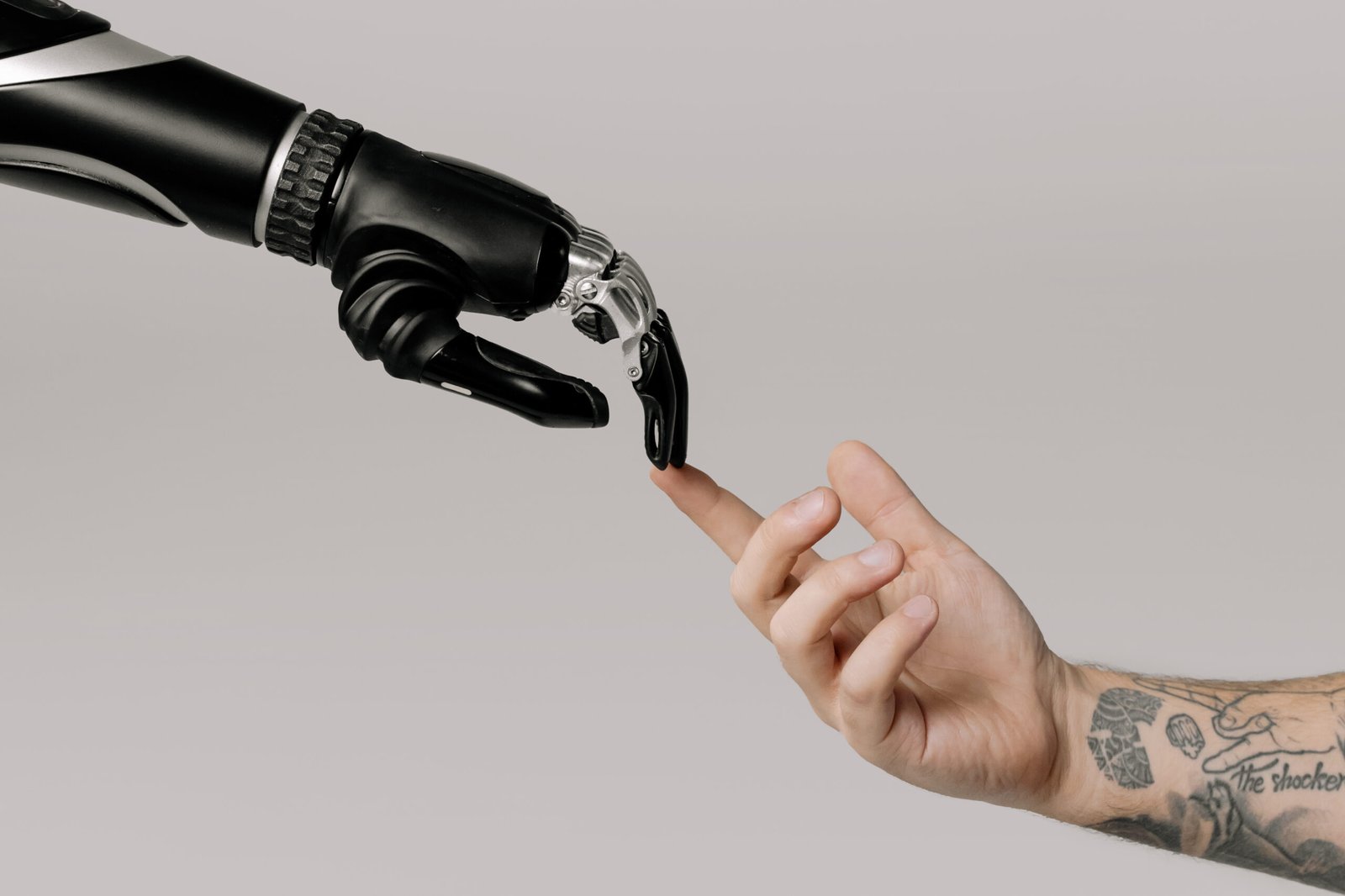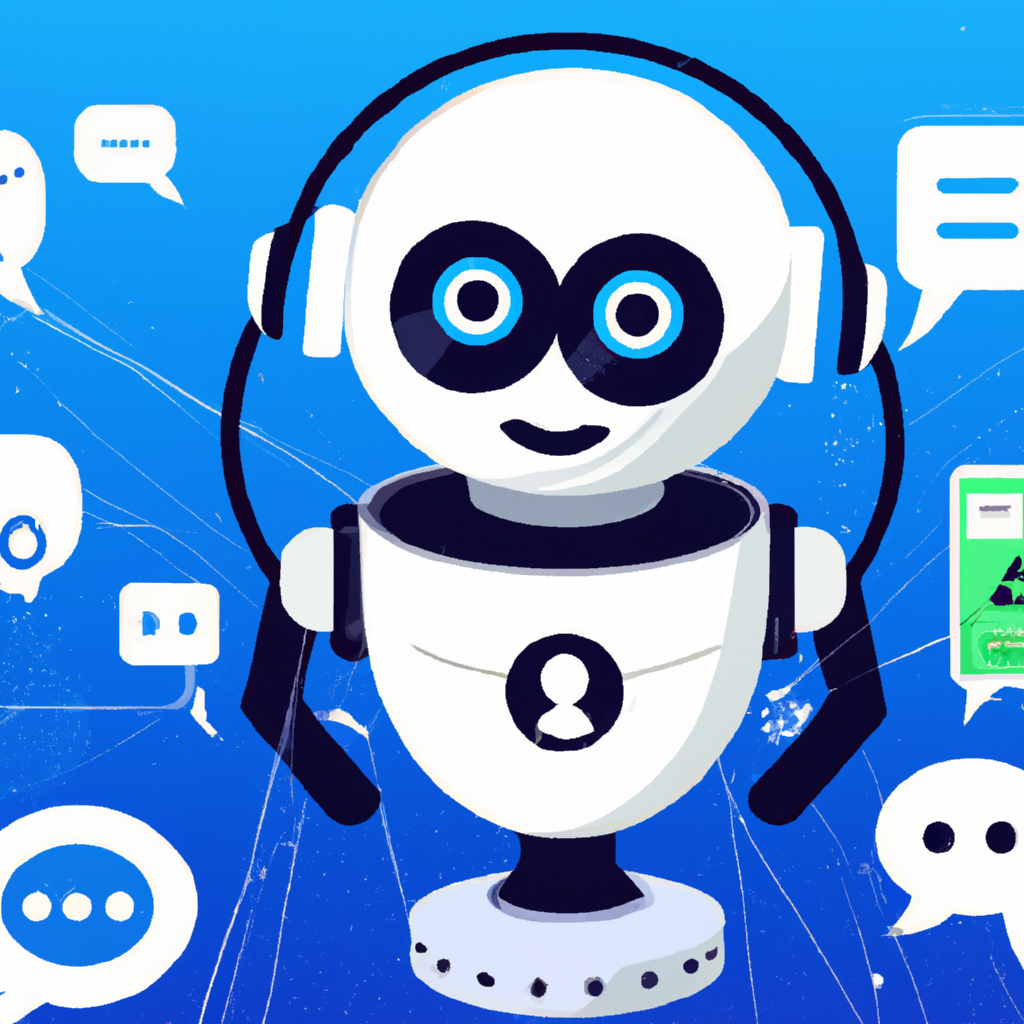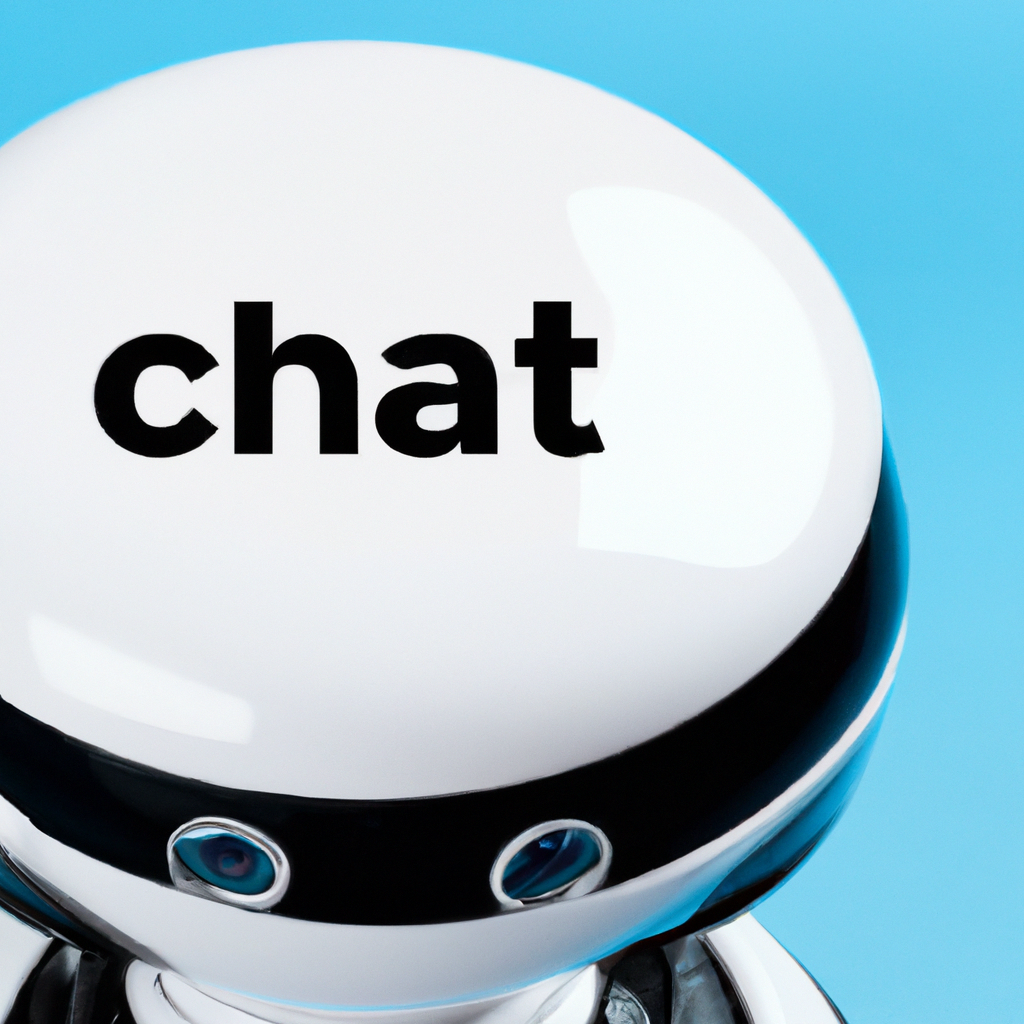Have you ever wondered if AI chatbot builders can seamlessly integrate with voice assistants and smart speakers? The answer is yes! In today’s technologically advanced world, AI chatbot builders are equipped with the ability to integrate and collaborate with voice assistants and smart speakers, bringing a whole new level of convenience and functionality to users. With this integration, users can now effortlessly interact with their favorite chatbots using voice commands, making the experience all the more interactive and engaging. Whether it’s getting restaurant recommendations, checking the weather, or answering any random query, the integration of AI chatbot builders with voice assistants and smart speakers is revolutionizing the way we interact with technology.

Understanding AI Chatbot Builders
What are AI chatbot builders?
AI chatbot builders are software platforms that allow users to create and customize their own chatbots using artificial intelligence technology. These builders provide a user-friendly interface and pre-built templates that make it easy for individuals and businesses to develop chatbots without the need for extensive coding knowledge.
How do AI chatbot builders work?
AI chatbot builders leverage natural language processing (NLP) and machine learning algorithms to understand and generate human-like responses to user inquiries. They utilize a combination of predefined rules, machine learning models, and neural networks to analyze user input and provide appropriate responses. These chatbots can be designed to handle a variety of tasks, such as customer support, lead generation, or information retrieval.
Benefits of using AI chatbot builders
Using AI chatbot builders offers several benefits. Firstly, they eliminate the need for extensive programming knowledge, making it accessible to a wider audience. Additionally, they save time and resources as users can build and deploy chatbots quickly. AI chatbot builders also allow for easy customization, ensuring that the chatbot aligns with the brand’s voice and style. Lastly, these builders provide analytics and reporting features that enable users to track the chatbot’s performance and make improvements based on user interactions.
Voice Assistants and Smart Speakers
What are voice assistants?
Voice assistants, also known as virtual assistants, are AI-powered software applications designed to respond and interact with users through voice commands. Examples of popular voice assistants include Amazon Alexa, Google Assistant, Apple Siri, and Microsoft Cortana. Voice assistants can perform various tasks, such as answering questions, providing weather updates, setting reminders, or controlling smart home devices.
What are smart speakers?
Smart speakers are stand-alone devices equipped with built-in voice assistants. These devices are designed to provide a centralized hub for voice interaction with the virtual assistant. Users can simply speak commands or ask questions, and the smart speaker will process the request and provide a response. Smart speakers are becoming increasingly popular due to their convenience and ability to integrate with other smart home devices.
Key features and functions of voice assistants and smart speakers
Voice assistants and smart speakers offer a range of features and functions. They can provide real-time information on weather, news, sports scores, and more. They can also control smart home devices, play music, set reminders and alarms, make hands-free phone calls, and send text messages. Additionally, voice assistants and smart speakers can perform online searches, provide directions, and even engage in casual conversation with users.

Integration of AI Chatbot Builders with Voice Assistants and Smart Speakers
Why integrate AI chatbot builders with voice assistants and smart speakers?
Integrating AI chatbot builders with voice assistants and smart speakers allows for seamless and interactive communication between users and chatbots. This integration enables users to access the chatbot’s functionality and services through voice commands, eliminating the need for typing or navigating through a chat interface. By combining the capabilities of chatbot builders and voice assistants, businesses can enhance the user experience and provide a more convenient and efficient way of interacting with their services.
Challenges and limitations of integrating AI chatbot builders with voice assistants and smart speakers
Integrating AI chatbot builders with voice assistants and smart speakers presents some challenges and limitations. Firstly, ensuring proper integration requires understanding the distinct capabilities and limitations of both the chatbot builder platform and the voice assistant or smart speaker. Additionally, optimizing chatbot responses for voice interaction may require additional design considerations, as the preferred format and style of responses can differ between chat and voice interfaces. Furthermore, integrating with voice assistants may require complying with specific platform requirements and guidelines, which can add complexity to the integration process.
Benefits of Integration
Enhanced user experience
Integrating AI chatbot builders with voice assistants and smart speakers significantly enhances the user experience. Users can interact with the chatbot hands-free and receive immediate responses through natural language conversations. This eliminates the need to type or navigate through screens, making the interaction more intuitive and user-friendly.
Increased accessibility
Integration with voice assistants and smart speakers increases the accessibility of chatbot services. Users with disabilities or those who are unable to use traditional input methods can benefit from voice-driven interactions. Voice assistants and smart speakers provide an inclusive solution for individuals with physical or visual impairments, allowing them to access and utilize chatbot services easily.
Efficient and streamlined communication
Integrating AI chatbot builders with voice assistants and smart speakers streamlines communication as it eliminates the need for users to switch between multiple platforms or devices. Users can make voice commands or ask questions to the voice assistant, which will then communicate with the chatbot builder to retrieve and provide the desired information or perform the requested task. This integration simplifies the interaction process and reduces friction, resulting in a more efficient and seamless communication experience.
Expanded reach and availability
Integration with voice assistants and smart speakers expands the reach and availability of chatbot services. These devices are widely adopted and available in various settings, including homes, offices, and public spaces. By integrating with voice assistants and smart speakers, businesses can reach a broader audience, increase engagement, and extend the availability of their chatbot services beyond traditional platforms.

Popular AI Chatbot Builders
Introduction to popular AI chatbot builder platforms
There are several popular AI chatbot builder platforms available in the market. These platforms offer a range of features and capabilities for building and deploying chatbots. Some of the well-known platforms include:
-
Dialogflow: Dialogflow, developed by Google, offers a comprehensive suite of tools for building conversational interfaces. It provides a user-friendly interface, natural language understanding capabilities, and seamless integration with voice assistants and smart speakers.
-
Watson Assistant: Watson Assistant, developed by IBM, enables users to design, build, and deploy AI-powered chatbots. It offers advanced natural language processing capabilities, multilingual support, and integration with various voice assistant platforms.
-
Chatfuel: Chatfuel is a popular chatbot builder platform that focuses on creating chatbots for Facebook Messenger. It offers a drag-and-drop interface, pre-built templates, and integration with third-party platforms.
Features and functionalities of each platform
Each AI chatbot builder platform has its own unique features and functionalities. Dialogflow provides advanced intent matching, entity extraction, and context management capabilities. Watson Assistant offers machine learning capabilities, sentiment analysis, and integration with IBM Cloud services. Chatfuel provides a visual bot builder, customizable templates, and integration with Facebook Messenger features such as quick replies and buttons.
Integration capabilities with voice assistants and smart speakers
All the popular AI chatbot builder platforms mentioned above offer integration capabilities with voice assistants and smart speakers. Dialogflow provides direct integration with Google Assistant, allowing users to deploy their chatbots on devices such as Google Home and smartphones with Google Assistant. Watson Assistant supports integrations with various voice assistant platforms, including Amazon Alexa and Microsoft Cortana. Chatfuel offers integration with Facebook Messenger, which can be accessed through voice commands on devices such as Amazon Echo Show or Facebook Portal.
Integration Process
Technical requirements for integrating AI chatbot builders with voice assistants and smart speakers
The technical requirements for integrating AI chatbot builders with voice assistants and smart speakers vary depending on the platform and the specific integration. However, some common requirements include:
-
API Access: Most chatbot builder platforms provide APIs that allow developers to integrate their chatbots with voice assistants and smart speakers. Access to these APIs is essential for establishing communication between the platforms.
-
Authentication and Authorization: Proper authentication and authorization mechanisms need to be implemented to ensure secure communication between the chatbot builder platform and the voice assistant or smart speaker. This may involve generating API keys, OAuth authentication, or other authentication methods provided by the respective platforms.
-
Voice Interface Design: Designing the chatbot’s responses for voice interaction requires considering the natural language format and tone of voice. Responses should be concise, clear, and conversational, taking into account the limitations of voice interfaces.
Step-by-step guide for integration process
The integration process for AI chatbot builders and voice assistants or smart speakers generally involves the following steps:
-
Choose the appropriate AI chatbot builder platform based on your requirements and target voice assistant or smart speaker platform.
-
Set up and configure the chatbot on the AI chatbot builder platform by defining intents, entities, and responses.
-
Obtain the necessary credentials and API keys from both the chatbot builder platform and the voice assistant or smart speaker platform.
-
Configure the integration settings on both platforms, including authentication and authorization mechanisms.
-
Test the integration by making voice commands or asking questions to the voice assistant or smart speaker and verifying the chatbot’s responses.
Troubleshooting common integration issues
During the integration process, some common issues may arise. Here are some troubleshooting tips to address these issues:
-
Verify credentials: Double-check that the API keys and credentials used for authentication and authorization are correct and properly configured on both platforms.
-
Check platform-specific requirements: Ensure that your chatbot builder platform and voice assistant or smart speaker platform meet the specific integration requirements stated by the respective platforms.
-
Test communication: Test the communication between the chatbot builder platform and the voice assistant or smart speaker by sending test requests and checking the responses. Debug any errors or inconsistencies found during testing.
-
Consult platform documentation and support: If you encounter any issues that are not easily resolved, consult the documentation and support resources provided by the chatbot builder platform and the voice assistant or smart speaker platform. They often offer troubleshooting guides and community forums to address common issues and provide assistance.

Best Practices for Integration
Optimizing chatbot design for voice interaction
To optimize chatbot design for voice interaction, consider the following best practices:
-
Use conversational language: Design chatbot responses using natural language that mimics human conversation. Avoid long, complex sentences and use shorter, straightforward responses that are easy to understand.
-
Handle ambiguous queries: Train the chatbot to handle ambiguous or incomplete queries by providing clarifying questions or offering alternative suggestions. This helps enhance the user experience and minimizes frustration.
-
Provide feedback and confirmation: During voice interactions, provide feedback or confirmation to let the user know that the chatbot has understood their request and is processing the information. This helps build trust and confidence in the chatbot’s capabilities.
Testing and refining the integrated AI chatbot
Testing and refining the integrated AI chatbot is crucial to ensure its effectiveness and usability. Here are some best practices for testing and refining the integrated chatbot:
-
Test in different scenarios: Test the chatbot in various scenarios to ensure it performs well under different conditions, such as different accents, background noise, and varying query lengths.
-
Collect user feedback: Gather feedback from users who have interacted with the chatbot through voice commands. Use their feedback to identify areas for improvement and refine the chatbot’s responses and functionality.
-
Continuously iterate and optimize: Regularly review user interactions and analytics data to identify trends and patterns. Use this information to make data-driven improvements and optimize the chatbot’s performance over time.
Implementing security measures for data protection
Implementing security measures for data protection is crucial when integrating AI chatbot builders with voice assistants and smart speakers. Here are some best practices for data security:
-
Use encryption: Ensure that all data transmitted between the chatbot builder platform, voice assistant or smart speaker, and the user is encrypted. Encryption helps protect sensitive information from unauthorized access.
-
Follow privacy regulations: Comply with relevant privacy regulations and guidelines to protect user data and ensure compliance with data protection laws.
-
Implement access controls: Restrict access to the chatbot’s data and APIs to authorized individuals or systems. Implement access controls and authentication mechanisms to prevent unauthorized access or manipulation of data.
Use Cases of Integrated AI Chatbot Builders
Customer service and support
Integrated AI chatbot builders can significantly enhance customer service and support by providing immediate and personalized assistance. Customers can make voice queries or issue voice commands to get quick answers, receive troubleshooting guidance, or access relevant information. This integration reduces wait times, improves customer satisfaction, and enables efficient handling of customer inquiries.
Virtual personal assistants
Integrating AI chatbot builders with voice assistants and smart speakers allows for the creation of virtual personal assistants. These assistants can handle tasks such as scheduling appointments, setting reminders, sending messages, and providing personalized recommendations. By leveraging the capabilities of chatbots and voice assistants, virtual personal assistants offer a hands-free and efficient solution for managing daily tasks and organizing personal information.
Marketing and sales automation
Integrated AI chatbot builders can be utilized for marketing and sales automation. Chatbots integrated with voice assistants and smart speakers can provide product recommendations, answer customer queries, and assist with the purchasing process. This integration enables businesses to engage with customers in a conversational manner, automate sales processes, and provide personalized marketing experiences.
Education and e-learning
Integrated AI chatbot builders have applications in education and e-learning. Voice-enabled chatbots can provide interactive and personalized learning experiences by answering questions, providing explanations, and delivering educational content through voice interactions. This integration facilitates hands-free learning and enhances engagement, making education more accessible and engaging for learners.

Future Perspectives
Advancements in AI technology and natural language processing
Advancements in AI technology and natural language processing are expected to further enhance the capabilities of AI chatbot builders and voice assistants. Improved algorithms and models will allow for more accurate understanding of user intent and context, resulting in more seamless and meaningful interactions between users and chatbots. These advancements will contribute to the overall improvement of user experience and the expansion of chatbot applications.
Potential for integration with emerging technologies
The integration of AI chatbot builders with voice assistants and smart speakers opens up the potential for further integration with emerging technologies. For example, integration with augmented reality (AR) and virtual reality (VR) can provide immersive experiences where users can interact with virtual chatbot avatars. Additionally, integration with Internet of Things (IoT) devices can enable chatbots to control and interact with smart home devices or other connected devices, expanding their functionality and reach.
Impact on various industries and sectors
The integration of AI chatbot builders with voice assistants and smart speakers is expected to have a profound impact on various industries and sectors. In customer service, it will revolutionize the way businesses handle customer inquiries and support, reducing costs and improving customer satisfaction. In healthcare, it can assist with patient monitoring, appointment scheduling, and providing reliable health information. In education, it can enhance e-learning experiences and provide personalized tutoring. The possibilities for integration are vast and can transform how industries operate and engage with customers.
Conclusion
In conclusion, integrating AI chatbot builders with voice assistants and smart speakers offers numerous benefits such as enhanced user experience, increased accessibility, efficient communication, and expanded reach. Popular AI chatbot builders provide advanced features and functionalities, along with integration capabilities with voice assistants and smart speakers. The integration process involves considering technical requirements, step-by-step implementation, and troubleshooting common issues. Best practices include optimizing chatbot design for voice interaction, testing and refining the integrated AI chatbot, and implementing security measures. Integrated AI chatbot builders have diverse use cases in customer service, virtual personal assistants, marketing and sales automation, and education and e-learning. The future perspectives for this integration include advancements in AI technology, potential integration with emerging technologies, and its impact on various industries and sectors. With the continuous development of AI and voice technology, the integration of AI chatbot builders with voice assistants and smart speakers will continue to evolve and transform the way we interact with technology and services.
